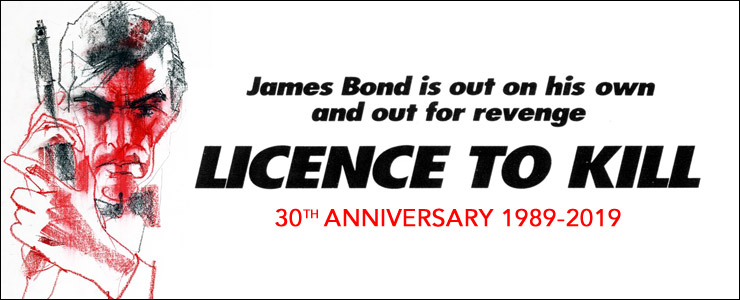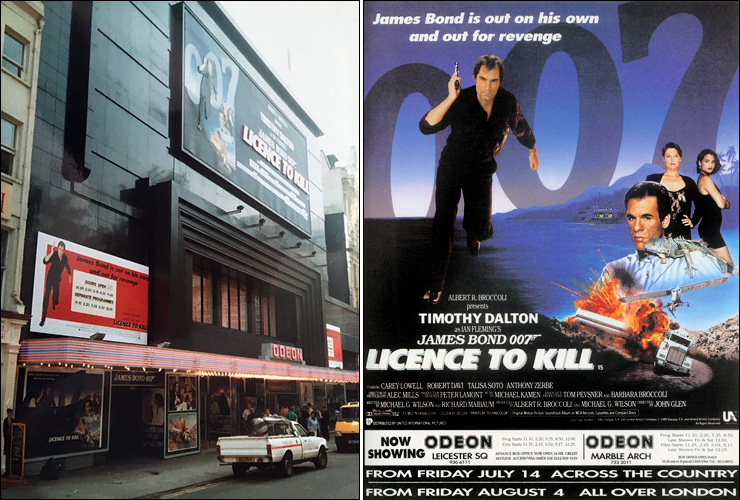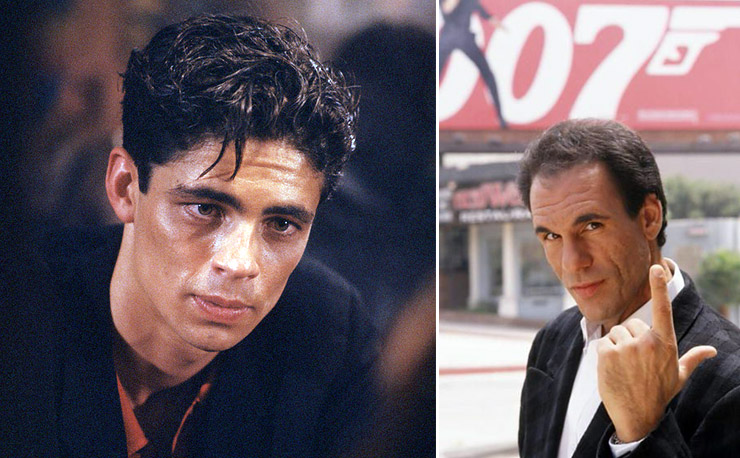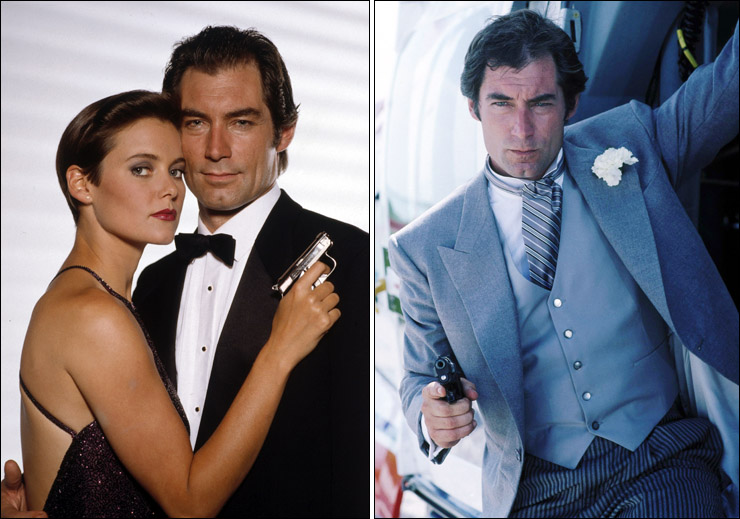Licence To Kill
|
||
|
||
Licence To Kill
|
||
|
||
 |
|
Licence To Kill had its Royal World Charity Premiere on the evening of Tuesday June 13, 1989 at London’s ODEON Leicester Square. The film then played in several key cities from Friday June 16th and across the country from Friday July 14, 1989. The sixteenth James Bond film was very successful at the box-office in the UK eventually becoming the seventh most popular film of the year despite its restricted audience. Licence To Kill fared less well at the US box-office when it opened on July 14th and struggled to find an audience alongside such blockbusters as Batman, Lethal Weapon 2, and Indiana Jones And The Last Crusade, taking just $34-million on its original release ($17-million less than The Living Daylights). Although the worldwide box-office take was $156-million, Licence To Kill is still the least financially successful film of the series. |
 |
|
The more realistic tone of the film, increased violence and disappointing advertising campaign were all factors in the less-than-enthusiastic reception Licence To Kill got on its original release. The film would mark the last time that Timothy Dalton would play the part of James Bond, as a series of legal wrangles kept 007 off the screen for the next six years. Licence To Kill was also the last Bond film directed by John Glen, and the last to have its main titles designed by Maurice Binder, who died in 1991. With Licence To Kill, the James Bond producers took one of the biggest gambles in the series’ 27-year history, and the film has divided fan opinion since its original release. Like On Her Majesty’s Secret Service two decades earlier, the film was generally regarded as a box-office failure, when in reality this was not the case. Licence To Kill floundered in the cinematic marketplace in 1989 as it was out of step with other major films released that year. The trend was now moving back to a more far-fetched comic-book style of film-making, and many of the hits of 1989 would be regurgitated once again in a now seemly endless series of sequels. Although Timothy Dalton was technically still James Bond up until his resignation in April 1994, and a third film in development, the legal problems facing producer Albert R. Broccoli made it impossible to produce a film, and for a while it seemed like Licence To Kill would be the last of the series. |
 |
|
With the eventual casting of Pierce Brosnan the series returned to a more familiar tone, and although an attempt was made to anchor the films in some reality, Die Another Day (2002) derailed all that prompting the franchise to reinvent itself once again. The casting of Daniel Craig in Casino Royale (2006) heralded a return to a grittier hard-edged character, which is perhaps how Timothy Dalton envisioned the character of James Bond back in 1987. In the wake of the uneven series of Daniel Craig films, Licence To Kill can now be re-evaluated on DVD and Blu-ray (with its original cuts now waived but retaining a ‘15’ certificate), and can be seen as a big gamble that ultimately didn’t pay off. In retrospect the film now stands alone as the black sheep of the franchise, and possibly ahead of its time in view of the direction the series has taken since 2006. Its production marked the end of an era, and when James Bond finally returned to the big screen in 1995, the world was a very different place. The technical realism that the producers strove to realise in 1989 was now becoming so much easier to achieve with the advent of digital technology. The character of James Bond returned to a more familiar hybrid of the Sean Connery and Roger Moore era, and Pierce Brosnan’s four films consequently a huge success at the box-office. |
 |
|
It is unfortunate that Timothy Dalton never really got his chance to bring Ian Fleming’s James Bond to the screen in a story directly based on one of the author’s novels. Although The Living Daylights and Licence To Kill do contain some original Fleming material, their contemporary settings make any comparisons with the literary world of James Bond somewhat redundant. Although On Her Majesty’s Secret Service (1969) was set in the modern world, it was made only six years after the novel had been published. It would not be until 2006 when the James Bond character was reinvented once more that the world would accept a grittier more realistic hero with Daniel Craig in Casino Royale, but this time he too had the benefit of a script faithfully based on Ian Fleming’s source novel, and that makes all the difference. |
|
|
|
|